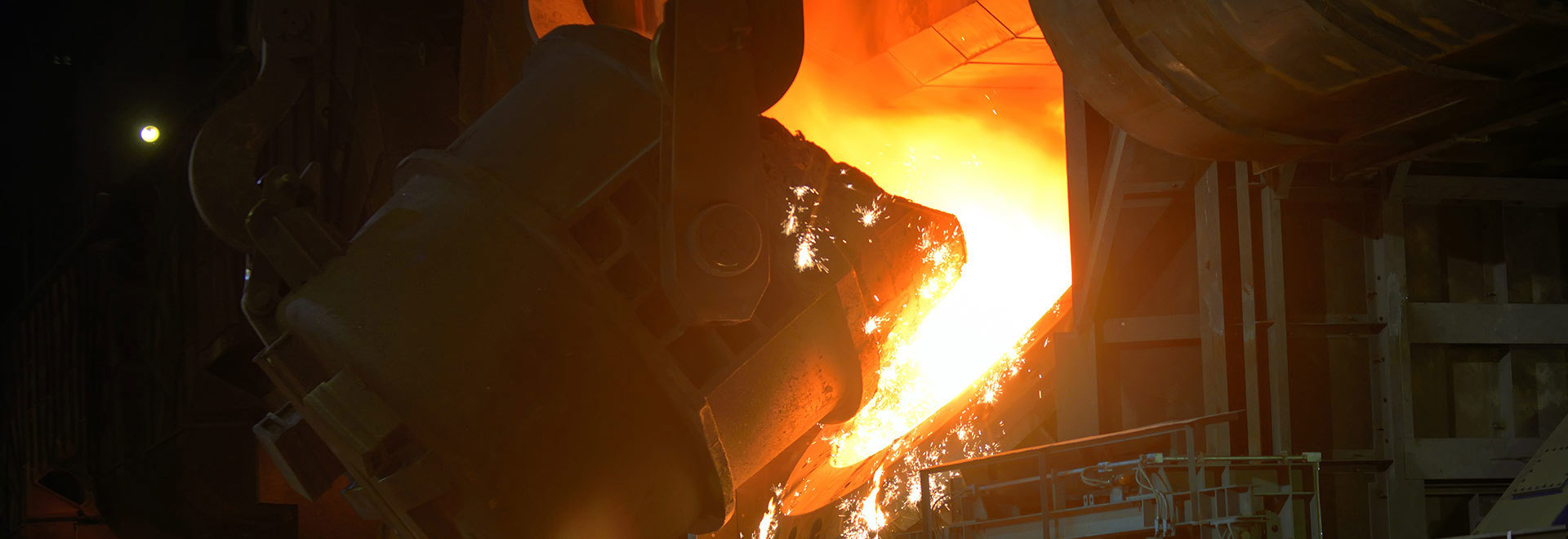Prevention of several defects of lost foam casting anode steel claw
Release time:
2022-06-30 13:46
Source:
1、Introduction to Castings
The main function of the anode steel claw is to form a guide rod group with aluminum guide rod and explosive welding block. The claw head and phosphorus pig iron work together to connect with the carbon block as the anode of the electrolytic cell,It is an important conductive part of the electrolytic aluminum industry, an important conductive part, and also a bulk consumable part, and the site is a four-claw anode steel claw.
2、casting process analysis
There are usually two schemes for lost foam casting anode steel claws:
①The claw head is upward, bottom injection is adopted, the crossbeam is provided with an in-gate runner, and the four claw heads are respectively provided with risers. It is conducive to layer-by-layer gasification and smooth filling of foam, and is not easy to produce internal defects such as slag inclusion. The disadvantage is that the molding is troublesome and the modeling is also troublesome. If the sand box is small and the top sand is insufficient, it is easy to cause box collapse, it is difficult to cut the riser after pouring, the milling claw head is troublesome after cutting the riser, and the processing allowance needs to be increased, thus affecting the production efficiency.
②The claw head is facing down, and a sprue is set on the platform on the beam. Top injection has fast filling speed and less temperature reduction, which is beneficial to prevent defects such as insufficient pouring and cold isolation. The casting yield is high, the casting cutting amount is small, the machining difficulty is small, and the production efficiency is high.
According to the actual situation on site and various considerations, select the scheme.②.
3、Brief Introduction of Casting Process
3.1 white area
The white area adopts a molding machine to punch the white mold. The white mold is provided with a pouring riser. The two pieces form a steel claw. The inner hollow reduces the gas emission. The hot melt adhesive is bonded. There should be no gap in the bonding part to prevent the coating from entering the white mold and causing defects such as slag inclusion.
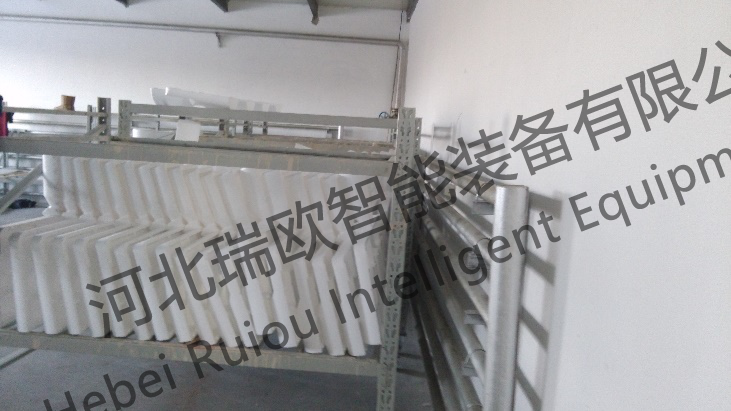
Figure 3.1.1
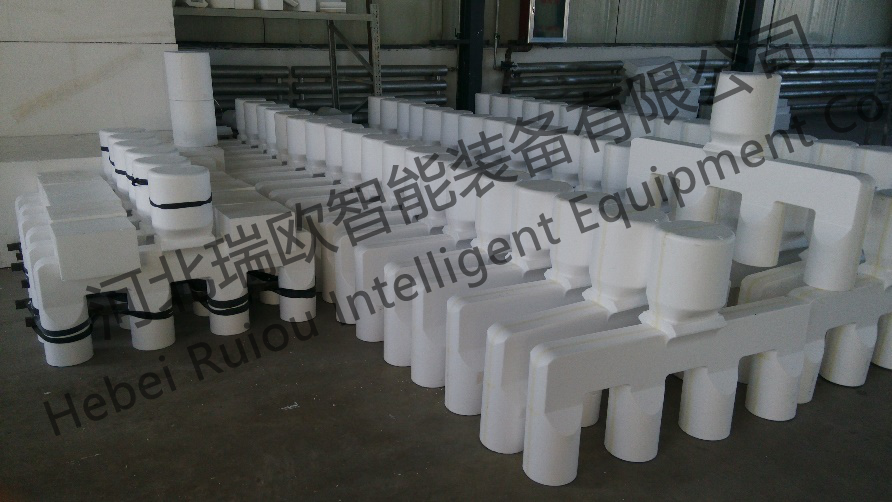
Figure 3.1.2
3.2 Yellow Zone
Yellow is divided into paint brushing and drying. The site uses RuiCompanySpecial coating for cast steel, coatingWater adopts a ratio of 1: 0.6, stirring for one hour, brushing the coating three times, the first time is slightly thinner, to prevent the second time coating from cracking easily after drying, the second time is slightly thicker and the third time, after three times, ensure that the coating is 1.5~2.0mm, too thin coating affects refractoriness, too thick coating affects permeability, drying room temperature is 45~50 degrees, drying for more than 8 hours each time, so as to fully dry.
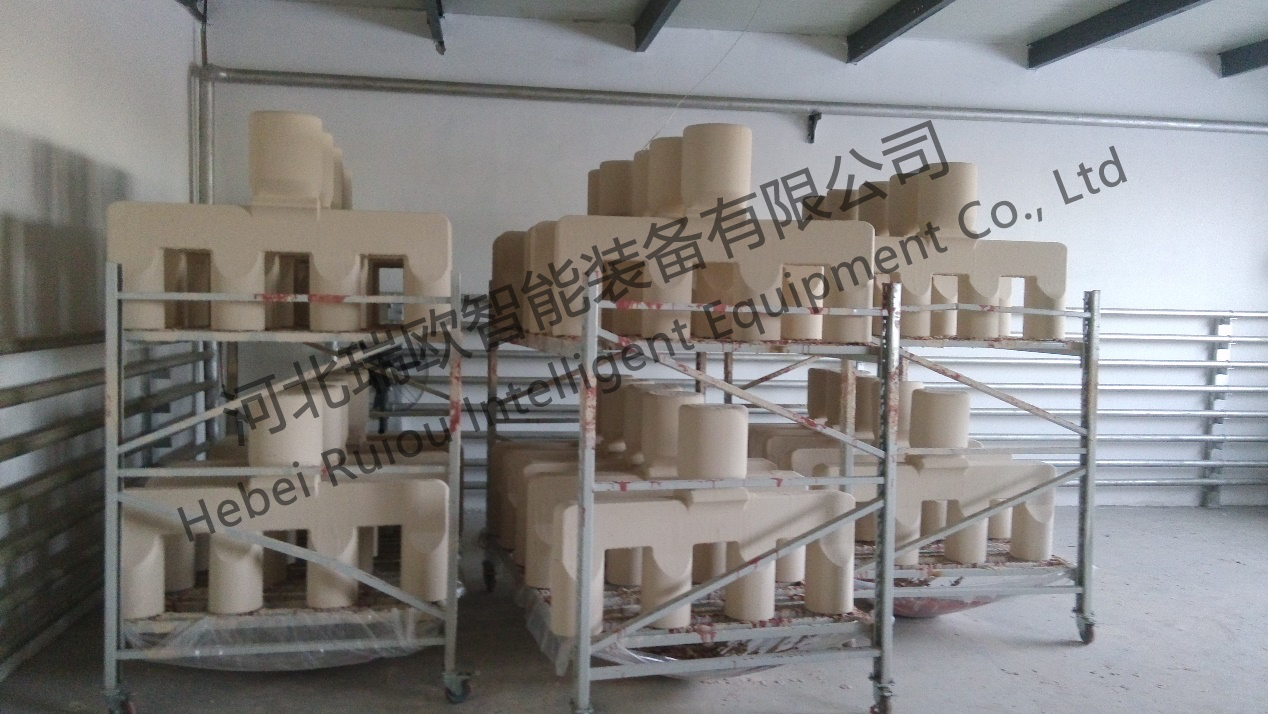
Figure 3.2.1
3.3 black area
Modeling, a box of two, the middle spacing200mm, top sand thickness 200mm, to prevent collapse of the box. The pouring temperature is 1580 degrees, the negative pressure is -0.05 ~-0.06MPa, the pouring time is 30~40s. After pouring, keep the pressure for 20min, turn over the box after keeping the heat for two hours, cut the riser and clean the casting.
4、Defects in Production and Preventive Measures
4.1 four-claw deformation
Form of expression: the four claws are deformed, the center distance is different or the plane of the claws is not in the same plane, which affects the subsequent use.
Cause analysis: deformation is mainly in the white mold drying and brush paint when deformation.
Preventions:① As shown in Figure 4.1.1 below, tooling assistance shall be made when bonding the two white molds to ensure that the two molds fit tightly. After bonding, a straight iron strip shall be placed on the side of the four claws, and the four claws shall be tied to the iron strip respectively to play a fixing role.
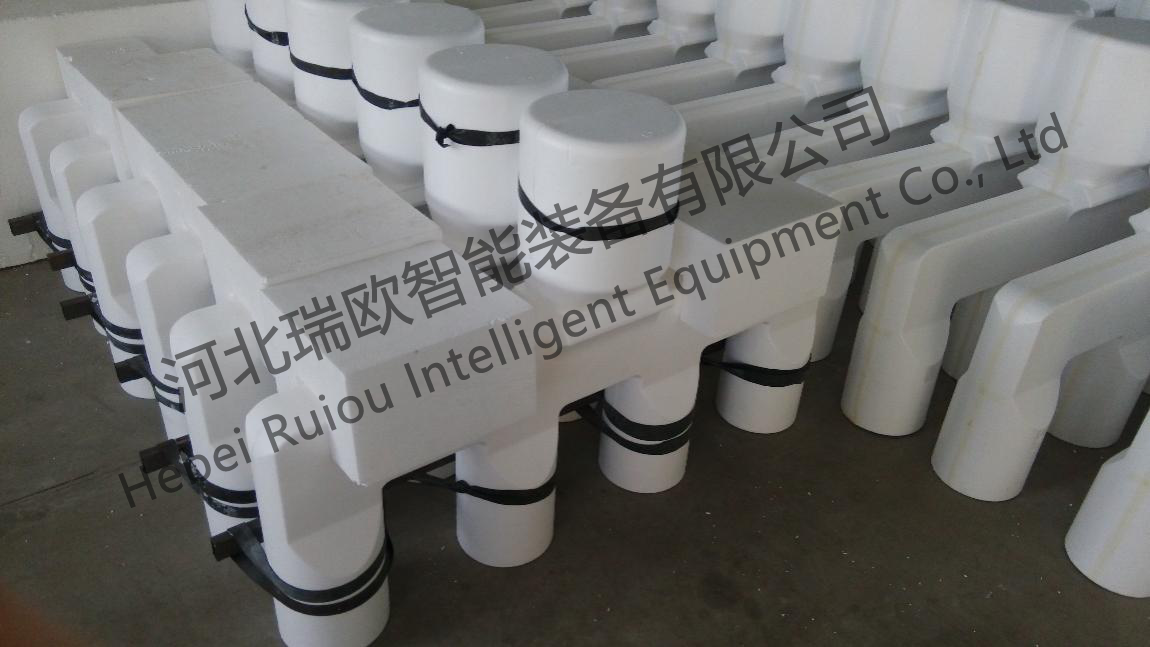
Figure 4.1.1
Change the mold, increase the bar between the four claws, play a fixed strengthening role, prevent deformation, this method is simple and efficient, it is recommended to use this method.
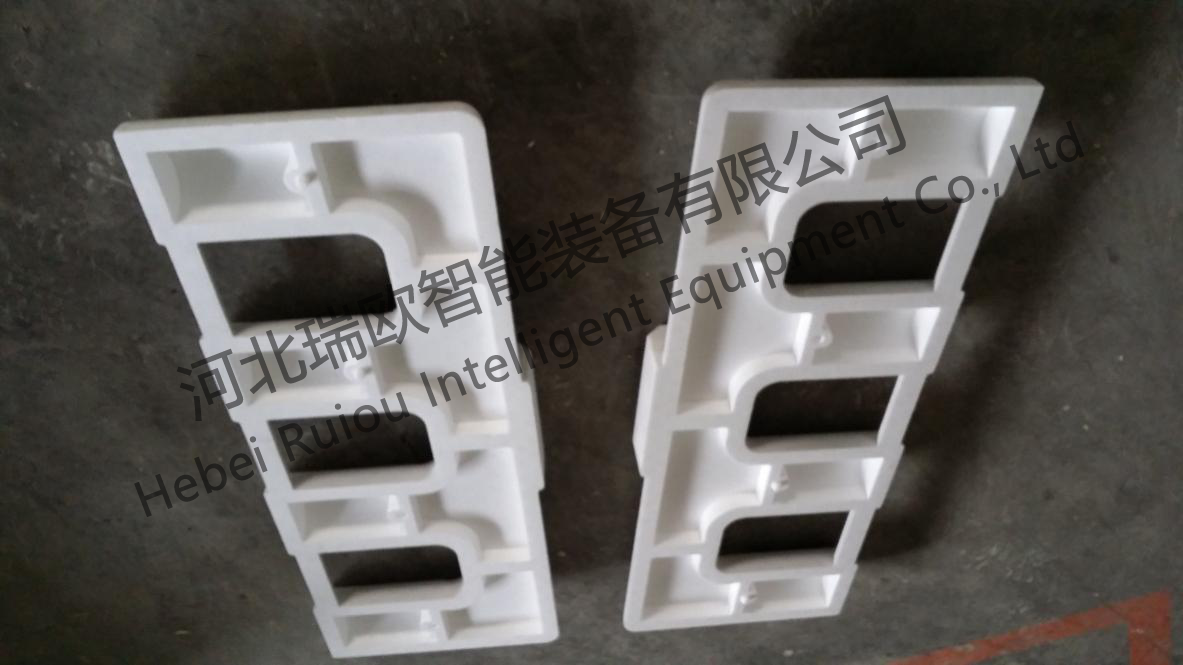
Figure 4.1.2
③ When brushing the paint, do not press the white mold hard into the paint tank to prevent deformation, try to use spray coating, and scoop the paint on the surface of the steel claw with a scoop.
4.2 glassy bodies on casting surface
Form of expression: as shown below4.2.1, there are a lot of glaze on the surface of the whole steel claw, and the casting is scrapped.

Figure 4.2.1
Cause analysis: The temperature in northern Xinjiang is extremely low in winter and the temperature drops rapidly, so the temperature of the furnace is required to be higher accordingly. There is no temperature measuring gun on site, so the temperature cannot be detected. Moreover, the temperature of molten steel cannot be well judged by deoxidation with aluminum on site. Therefore, the temperature is increased as much as possible, causing some furnace materials to melt into molten steel, and glassy objects are attached to the casting surface after pouring.
Preventive measures: optimize the on-site pouring procedure, pour as soon as possible after the furnace is discharged, reduce the temperature drop from the furnace to the pouring process, measure the temperature of each furnace of molten steel, control the temperature of the furnace, and use the furnace material with relatively high refractoriness to hit the furnace.
Slag hole on beam of 4.3 anode steel claw
Form of expression: as shown below4.3.1. This kind of defect is a common defect in the production process of anode steel claws. A large number of slag holes appear on the upper part of the beam, and the surface quality is very poor, resulting in the scrapping of castings.
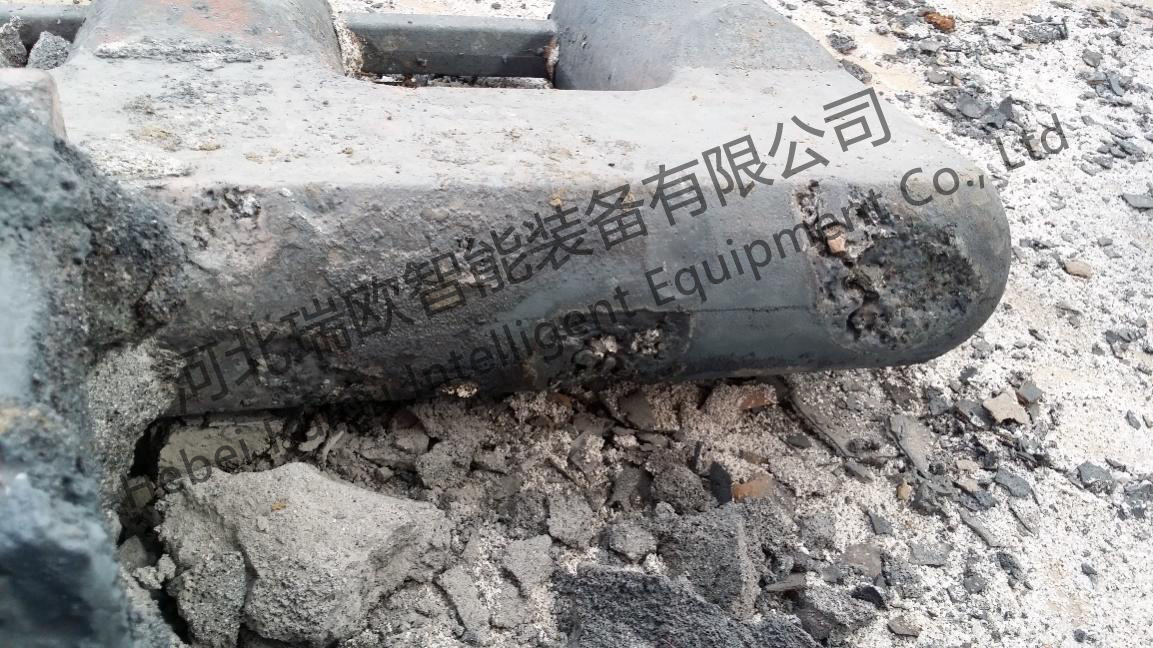
Figure 4.3.1
Cause analysis: there is a large amount of slag in the molten steel smelting process, the slag beating is not complete, the slag blocking is not good in the pouring process, and the anode steel claw is a thick and large piece, the cooling is slow, the top injection type is adopted, the slag in the molten steel fully floats up, and finally appears at the beam of the anode steel claw.
Prevention measures: during the smelting process, pay attention to maintaining the cleanliness of molten steel, select raw materials with less impurities, carry out slag beating once before molten steel is discharged, and carry out slag beating once in the ladle after discharging. after slag beating is finished, sprinkle a layer of slag cleaning covering agent on the surface of molten steel. during pouring, place a piece of thermal insulation rock wool at the ladle nozzle to stop slag, and increase the negative pressure appropriately during pouring to stabilize-0.06MPa, holding pressure for 20min after pouring.
5、Summary
Anode steel claws are castings with relatively simple structure, but a little attention to details in the production process will cause various defects. Therefore, we must maintain a rigorous attitude in production and strictly control each production link to ensure product quality.
Previous Page
Related News


